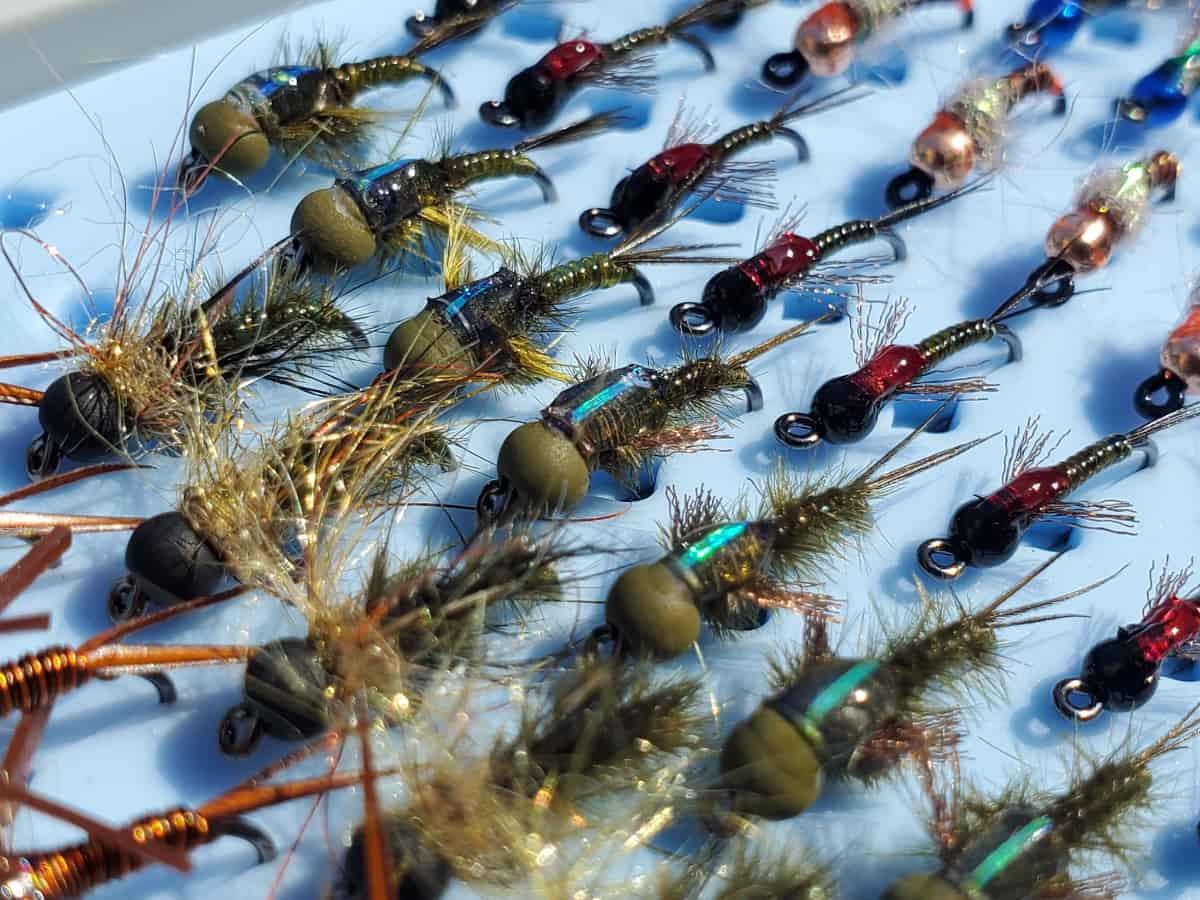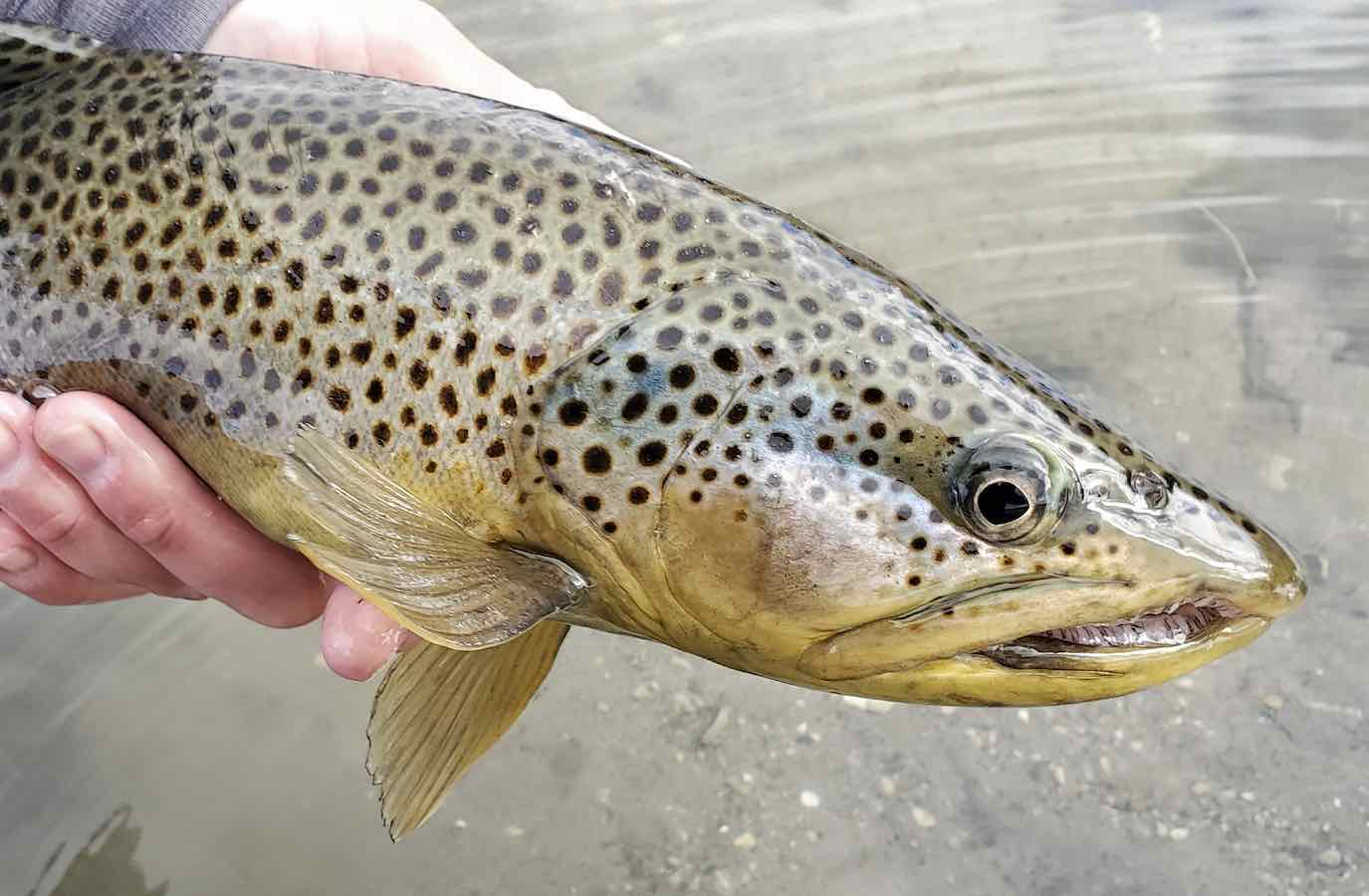Down and Dirty: Deep Water Nymphing for Winter Trout

Images by Mike Doughty
Cold weather sends trout into hiding. Like rabbits scurrying into thick cover when a hawk passes overhead, trout will flee before a sweeping a cold front and head into the deepest darkest water they can find. During these times, the fish become extremely sluggish, hugging the bottom and only feeding on prey that drifts right by their noses.
Most trout anglers give up during these chilly times of the year, putting their rods away and waiting for warmer temperatures to make the trout more cooperative. However, it’s entirely possible to still have a good day on the water during the winter by dropping your flies down into the deep holes where the trout are hiding. With only a few simple modifications to a basic nymphing set-up, you can get keep landing fish no matter how cold it gets by getting your flies right into a winter trout’s living room.
Fish Small Heavy Flies
While large stonefly nymphs and big bright jig patterns are always worth a try, generally in the winter you’re going to have better luck with smaller nymph patterns. This is especially true when you’re fishing in the low, clear-water conditions that come with the season. It can be challenging thing, as smaller nymphs don’t sink as quickly as larger, heavier flies, often forcing you to add a ton of split shot to your nymph rig to get down to the bottom. However, adding split shot to your line can make your set-up drift unnaturally in the current, drawing less attention from the cold, lock-jawed winter trout lying along the bottom of the river. But, by being a bit more selective with your nymphs and choosing small fly patterns made of material that sinks quickly, you can get around this problem and bring more fish to the net.
One of the quickest and easiest ways to get heavier nymphs is by tying or buying nymphs made with tungsten and using them in place of standard fly patterns. Tungsten is a heavier metal than steel or brass, and when it’s used as a bead head for nymphs it makes them sink like a rock. For example, instead of using a brass bead head pheasant tail as your lead fly, swap it out for a tungsten head pheasant tail and see what a difference it will make.
When fishing with multiple nymphs, use the heavier fly as your top fly and then use a lighter, unweighted or lightly weighted nymph as your dropper. This lets the heavy fly act as an edible weight which will tow your smaller lighter patterns down to the bottom, giving picky trout multiple feeding options.
Lengthen Your Leader
While it may seem obvious that a longer leader is necessary for fishing in deeper waters, figuring out exactly how much length to add to your leader can be a real challenge. The rule of thumb in nymphing is to use a leader that is roughly half again as deep as the water you are fishing, if you’re fishing in 6 feet of water use a 9 foot leader. As flies generally drift with a small bend in the line from the leader being pulled along in the current (unless you’re tightline nymphing) this rule will keep your flies within a foot of the bottom as they drift. During the winter, though, when fish are less willing to move for a fly, you often need to be fishing deeper than you think is necessary so that your nymphs are drifting within an inch or two of the bottom of the river.
To properly gauge your leader length for winter fishing, you want to figure out the exact depth of the hole you are fishing. The easiest way to do this is by clipping a pair of forceps or some other heavy but easily detachable object to the end of your line and sinking it down to the bottom of the deepest part of the water you are fishing. Mark the depth and attach your indicator to the line at the highest point so that it barely sticks out of the water.
Once you’ve determined the water’s depth, add a 2 to 4 foot length of tippet to your line using a shorter length for heavier flies and a longer length for lighter flies. This will give you room to play as you drift, trimming a few inches off the bottom of your leader if you’re constantly getting snagged or adding a bit if you’re not hitting bottom at all. This will ensure that your flies are drifting a few inches from the bottom of the hole, right where winter trout will be holding.

Go low and Go Slow
Slow drifts are the name of the game when fishing in deep water. You don’t want to monkey around with fast-moving runs that won’t give your flies time to sink down into the strike zone. Look for more sluggish water that’s moving at roughly a walking pace or slower and so deep enough you can barely see the bottom. Or better yet, you can’t see the bottom at all.
Once you’ve found a few spots and have a rough idea of the leader length and flies necessary to fish it, you want to drift the hole as slowly as possible. Cast your rig upstream and make a sharp mend so your nymphs sink close to the bottom. Once you start drifting, you want to continue to make small mends so that your fly line is floating in a loose loop slightly above your indicator, dumping a small amount of slack into the drift with each mend . This is called stack mending, which is the best way to ensure your flies continue to travel as slowly and deeply as possible.
Winter trout are sluggish and will often take the nymph by simply opening their mouths and inhaling it gently as it drifts by them. On a long leader, this can be difficult to detect so you want to set the hook anytime the indicator twitches, bobs, or even hesitates as it goes through the water.
Fight the Cold
Winter can be the most depressing time for fly anglers. The days are short, the water is cold, and everything seems to be swathed in a bleak film of gray. Yet when you know how to nymph in deep water, winter doesn’t have to be so bad. Deep-water nymphing allows you to add a bit of color to the dull season in the vibrant form of the trout you pull from their deep hiding places, ensuring that you have a bit of trouty cheer all winter long.










